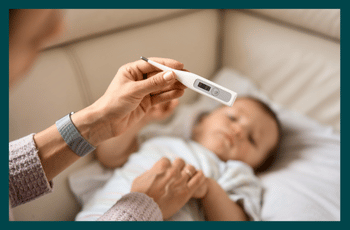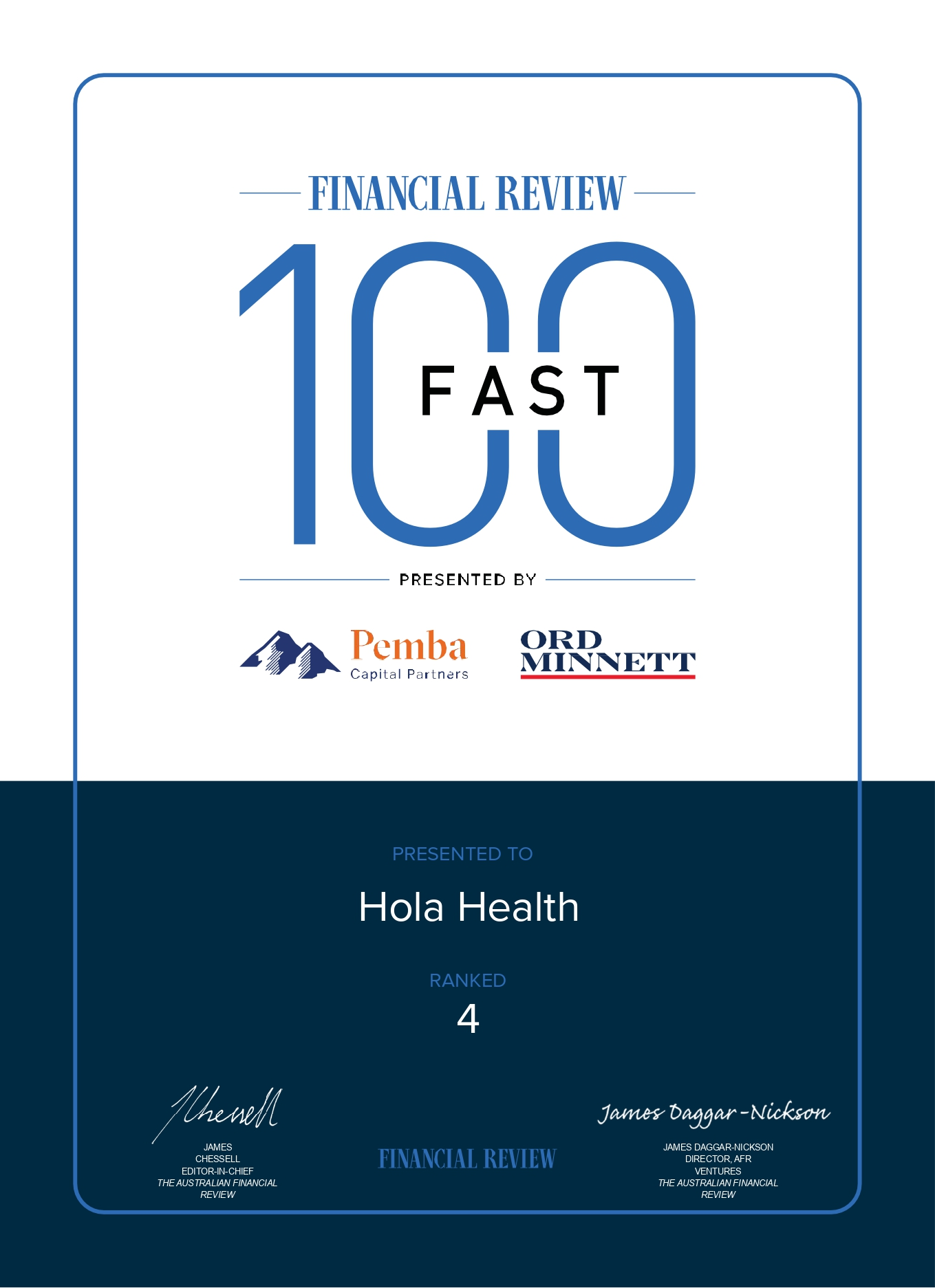- Home
- /
- Health Conditions
- /
- Fever Treatment
Fever Treatment
Speak to a registered medical practitioner online within 15 minutes and get medical advice instantly, 24/7.
About fever

Medically reviewed by Dr. Ammar AL-ANI, MBChB, CCBST, AMC
When to consult a doctor for fever?
Most mild fevers usually resolve on their own with rest and some over-the-counter medication. When the fevers last long or if the patient is either too old or too young, it is important to seek medical attention as soon as possible. You should consult a doctor for a fever if:
- The fever lasts more than three days or is very high (above 39.4°C or 103°F).
- You have severe symptoms, such as chest pain, difficulty breathing, or persistent vomiting or diarrhoea.
- The fever is accompanied by a rash, severe headache, neck stiffness, confusion, or seizures.
- You have underlying health conditions, such as a weakened immune system or chronic illness.
- The fever occurs in an infant under three months old.
- If you recently travelled abroad.
- If you have a fever that seems to be getting worse with time
What are common symptoms of a fever?
Symptoms of fever usually include:
- Flushed face
- Feeling hot
- Feeling sweaty when the fever goes down
- Chills
- Muscle ache
- Headaches
- Vomiting in some cases
What are common causes of fever?
It is important to understand the underlying cause of the fever to diagnose and treat it correctly. Here are some common types of fever:
- Viral infections: Such as colds, flu, COVID-19, and other respiratory infections.
- Bacterial infections: Such as tonsillitis, pneumonia, and urinary tract infections.
- Chronic illnesses: Such as rheumatoid arthritis and ulcerative colitis, which can lead to prolonged fevers.
- Tropical diseases: Such as malaria, dengue, and typhoid fever, often cause recurring fevers.
- Heat stroke: Causes fever without sweating.
- Medication reactions: Some individuals may experience fevers as a side effect of specific drugs.
- Others: Some other fevers are found in Australia such as Q Fever or Australian spotted fever (Tick bites).
When to worry about fevers in children/babies?
When it comes to fever in children or fever in babies, it’s essential to consult a doctor if:
- A baby under three months has a fever above 38°C
- A baby between three to six months has a fever or appears unusually irritable, lethargic, or uncomfortable.
- The fever lasts more than three days
- Your child shows signs of dehydration, difficulty breathing, persistent vomiting or diarrhoea, rash, or is unusually sleepy or unresponsive.
- The fever is accompanied by a seizure, stiff neck, or severe headache.
What are some home remedies for fever?
There are many natural remedies to manage a fever such as staying hydrated, using a cool compress, plenty of rest, taking lukewarm showers, etc. It is important to avoid alcohol, doing stressful activities or bundling up while having a fever.
Can an online doctor help with a fever if the GP near me is not available?
Yes, an online doctor can assist with a fever, especially if your local GP isn’t available. No more searching for “doctors in Brisbane” or “doctors in Perth”. Through telehealth, you can discuss symptoms with a registered healthcare provider from anywhere in Australia within 15 minutes. An online doctor can assess your condition, suggest at-home care, and, if necessary, prescribe medications or recommend further medical attention.
Can I get a medical certificate online for a fever?
How does online prescription work for fever?
Online prescriptions for fever work through telehealth consultations with registered healthcare providers in Australia. During the telehealth appointment, you can discuss your symptoms, and the online doctor may diagnose the cause of your fever. If necessary, they can issue instant scripts which will be directly sent to your registered mobile number as an SMS (eScript). Hola Health’s online scripts service is available 24/7 and has a turn-around time of 15 minutes which makes getting a script online easy and convenient. These scripts can be dispensed from a pharmacy of your choice, or you can get a door delivery with our pharmacy delivery service.
How can we help?
Telehealth makes getting a GP appointment in Australia easier and quicker regardless of the patient’s location. In 4 easy steps where you book an online consult, fill in your details, add payment details and connect instantly with an online doctor or health practitioner. A licensed medical practitioner will speak with the patients during a telehealth appointment. They will diagnose the condition, and issue scripts, referrals, or medical certificates if approved. Some of the telehealth services offered by Hola Health include
- Telehealth appointments 24/7: Speak to an online doctor from the comfort of your home in Australia.
- Hassle-free medical certificates: Access a medical certificate online for work or school.
- Online scripts: Request scripts online anytime day or night.
- Online doctor referrals: Get GP referrals online for specialist, diagnostic tests such as pathology tests or radiology tests.
- Mental health care plans: Gain access to fully Medicare bulk-billed mental health care plans.
- Chemist delivery: Get your medicines delivered to your doorstep at your convenience.
Talk to a doctor today
Instantly connect to a registered practitioner within 15 minutes from anywhere in Australia, 24/7 for:
- General consults
- New & repeat scripts
- Referrals
- Medical certificates
- Mental health plans

Read more about fevers
Access telehealth services
Doctors Brisbane | Doctors Melbourne | Doctors Perth | Doctors Sydney | Doctors near me | Doctors Canberra | Doctors Adelaide | Doctors Darwin | Doctors Hobart
After hours Doctor Brisbane | After hours Doctor Melbourne | After hours Doctor Perth | After hours Doctor Sydney | After hours Doctor Hobart | After hours Doctor Gold Coast | After hours Doctor Canberra | After hours Doctor Adelaide | After hours Doctor Darwin | After hours GP | After hours doctor
Medical certificate | Medical certificate online for work | Medical certificate for school | Medical certificate for Uni | Medical certificate for stress | Carer’s leave certificate | Medical certificate NSW | Medical certificate QLD | Medical certificate VIC | Medical certificate WA | Doctors certificate online | Multi-day Certificate | Sick certificate online | GP medical certificate | Doctors note | Telehealth medical certificate | 2-day medical certificate | Medical certificate for sick leave
Instant scripts | eScript | Online prescriptions | Online prescriptions Sydney | Online prescriptions Melbourne | Online prescriptions Perth | Online prescriptions Brisbane | Online Rx prescription
Online referrals | Blood test referral | X-Ray referral | Pathology referral | Radiology referral | Specialist referral | Gynaecologist referral | Audiology referral | Ophthalmologist referral | Paediatrician referral | Ent specialist referral | Endocrinologist referral | Dermatologist referral | Urologist referral | Gastroenterologist referral
Telehealth appointment | Online Doctor | Bulk Billing Doctors | Doctors on-demand | Instant consult | Covid antiviral | Dial a Doctor | Online GP | Doctor appointment | Bulk-billing doctors | Telehealth pricing | GP online chat | Australian doctor | Web doctor | Home doctor | 24-hour doctor















